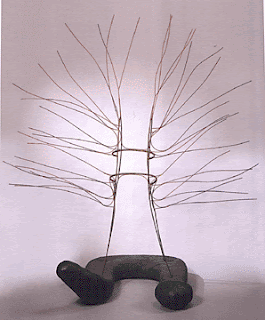
Finally got my copy of Unknown Worlds of Science Fiction #3, the one with the comic book version of Larry Niven's short story Not Long Before the End. I suspect this story is one of the distant influences of the spinner. I would have been an impressionable high schooler back then.
* * *
I'm beginning to think that one of the best uses of fx lies in finessing images like an artist. How do you create a shadow that is ambiguously an entity, a person, or just a shadow? With fx, you can tweak away, adding performance and story value to these kinds of images. If you're just shooting it, it's tough to get exactly the right image and tone.
* * *
When I was trying to describe the portable Memex to Ben he said, "Oh, like Brazil." So I've been watching that. Here's another film I actually saw in a theater. What's interesting is that it looks SO eighties. When I was watching it in the eighties, I thought as we all did that the film had an eclectic retro-deco mid-century look. The eighties vibe was totally invisible.
In retrospect the eighties influence is unmistakable. I never realized it before but what we think of as an eighties sensibility is really the last vestiges of disco.... neon, mirror tiles, airbrush art, lighted glass, flat unmodulated spaces, the beginnings of hi tech. Think Xanadu (1980). Then the eighties took on an identity of its own—homogenized New Wave, pastels... curiously, the phone jacks in Brazil are pastel colors. I wonder if they sold them like that back then or whether the production actually bothered to paint them. Then there's Jonathon Pryce's dream sequence makeup which looks like something straight out of an Adam Ant music video.
Watching Brazil emphasized the fact that no matter how hard you try to be timeless, you're still stuck in your era. One of the reasons I've been taking that mid-century production design approach for our film is that I didn't want it to become dated too quickly. It's something I used to see a lot in student work. Students would represent technology and the future with CDs and computers and microchips and of course it all looked dated by the end of the semester. Yet no matter what we do with our film, it's going to age in a certain way... in twenty years, I'm sure it will look "SO new millenium."

From the same comic book... the origins of the crystalline stars?














































